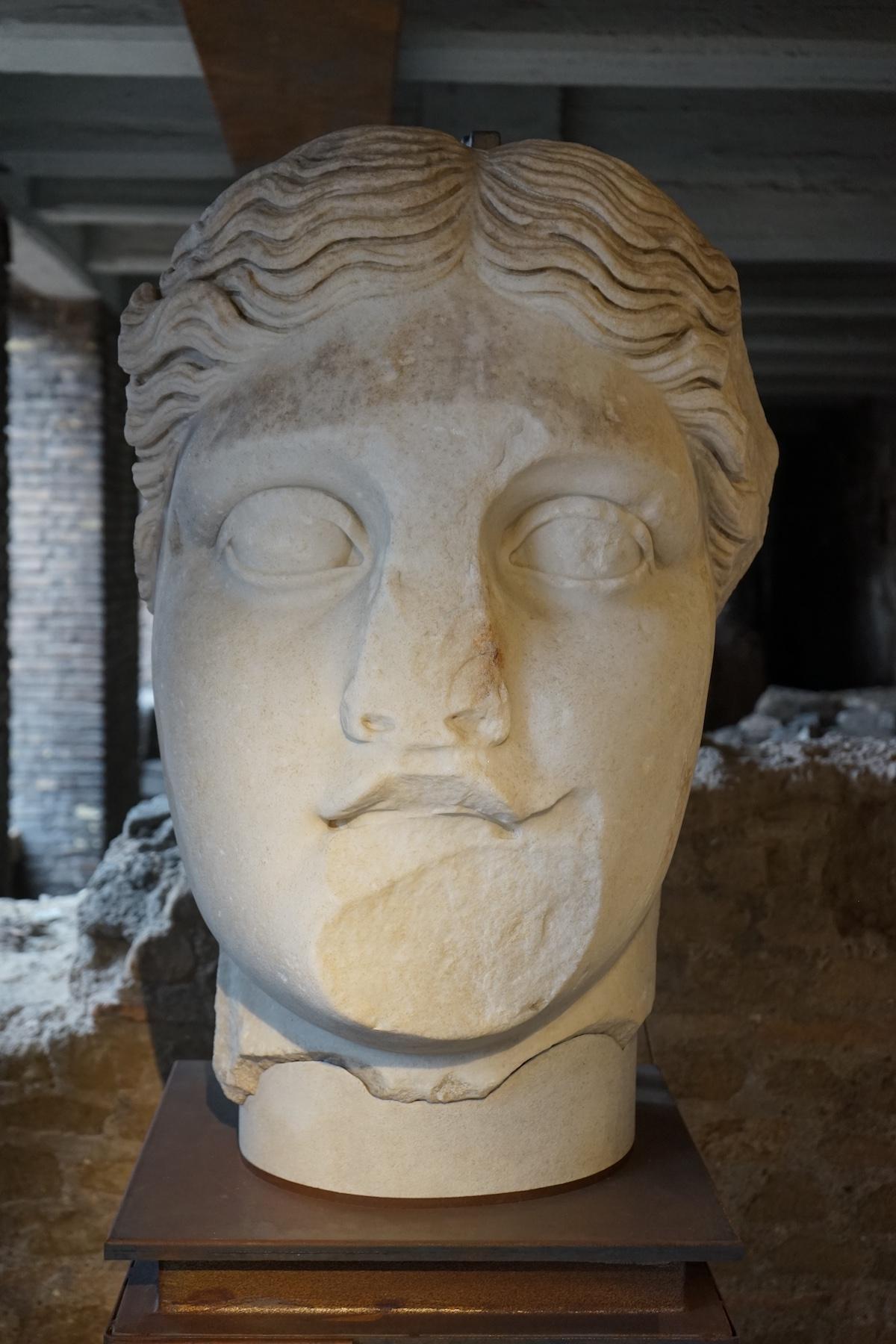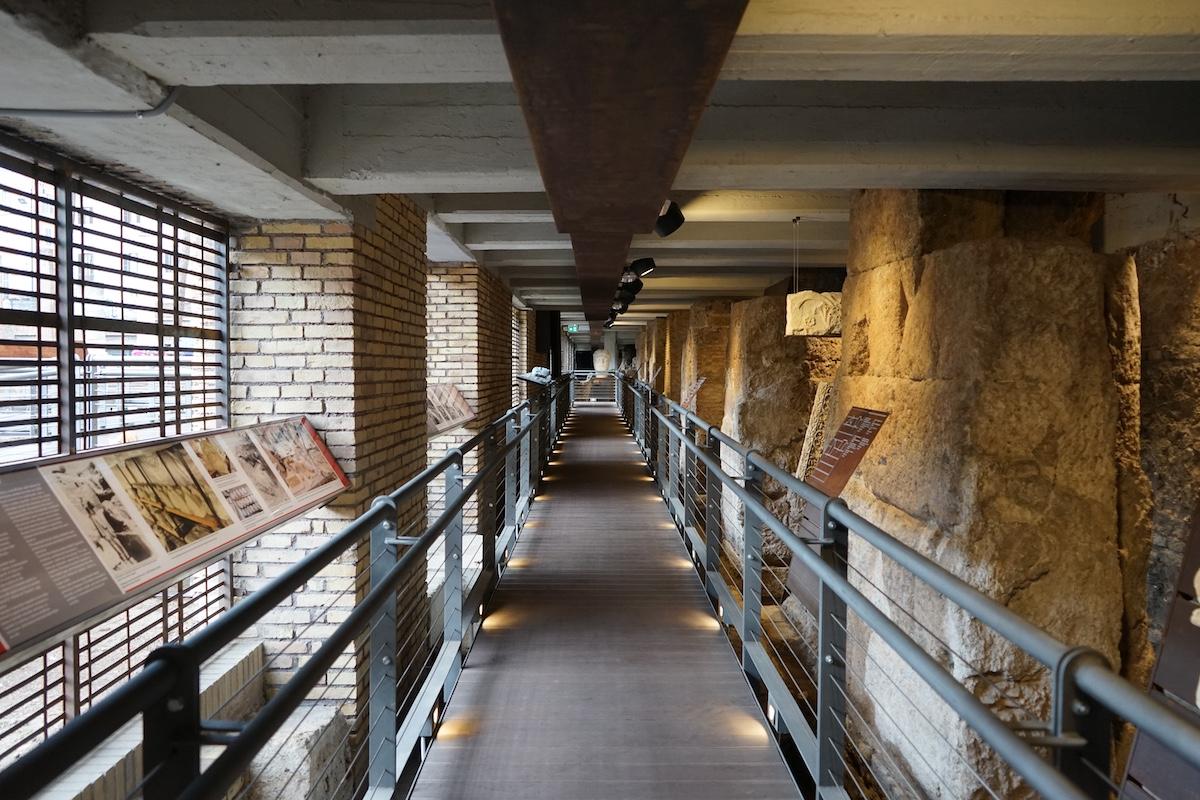The cumulative importance of the discoveries led the authorities to cancel the plans to build over the area; instead, it would be left open as an archaeological site.
A good idea in theory, the problem was that l’Area Sacra di Largo Argentina was then for decades inaccessible to members of the public. People could look down at temples from the street, but not actually visit them. Stray cats found refuge among the ruins and their presence often drew more attention from tourists than the confusing and somewhat neglected archaeology did. A large hole in the center of the city, the site came to serve as a traffic island – a curiosity, but with little explanation as to its significance.
This has now changed with the installation of walkways, which were completed and opened in June of this year. Today, it is possible to descend to the ancient levels. Floating above the Roman-era paving, the new paths are not overbearing, but sensitively executed, and being able to get so close to the structures allows for a far greater appreciation of them.



























![DEl Kathryn Barton [Australian b. 1972] the more than human love , 2025 Acrylic on French linen 78 3/4 x 137 3/4 inches 200 x 350 cm Framed dimensions: 79 7/8 x 139 inches 203 x 353 cm](/sites/default/files/styles/image_5_column/public/ab15211bartonthe-more-human-lovelg.jpg?itok=wW_Qrve3)



